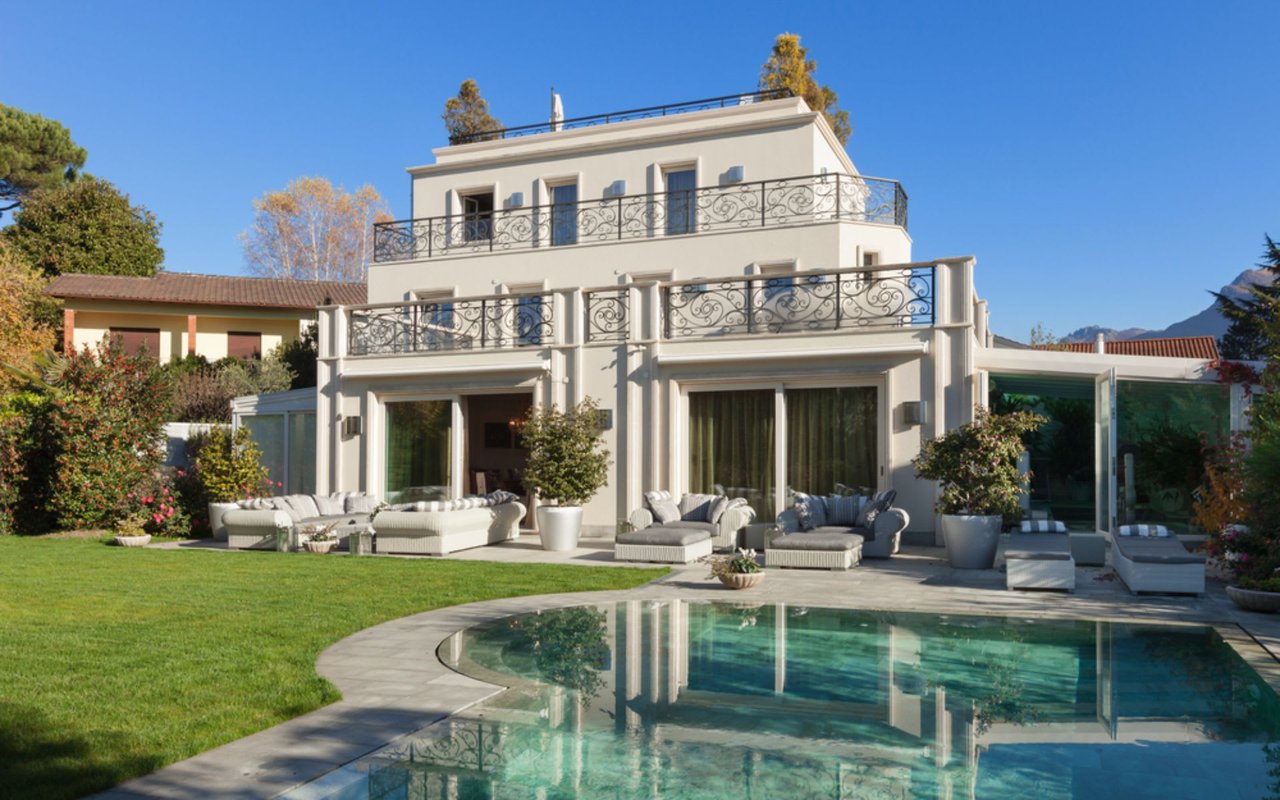North Columbus, Georgia, is nestled in a beautiful natural setting. The historic buildings, homes, and sites add charm to this setting. This close-knit community is full of outdoor recreational opportunities and arts and cultural attractions.
With its rich history and carefully preserved historic buildings, North Columbus is an elegant blend of old and modern architecture. The historic downtown has buildings on the National Register of Historic Places. In this district, one can see Georgian and Georgian Revival styles, antebellum and Colonial Revival styles, and English Vernacular Revival styles all beautifully intermixed. Homes, too, reflect different styles and eras.
California Ranch
Peacock Woods was a neighborhood developed in North Columbus in the 1920s. In 1950, with one lot left to purchase, E.D. Woods bought and had his dream home built, a California Ranch style house. Homes in the California Ranch Style are popular architectural styles that originated in the 1920s. The Woods home is a gorgeous example of this style that is still popular today.
Traditionally, these homes have a low, horizontal profile and a simple, functional design. After World War II, returning soldiers looking for affordable housing for their families favored the style. A fascinating aspect of California Ranch Style homes is their history.
Initially designed for the California climate, these homes offer large windows and open floor plans that let in natural light and ventilation. In a short time, the style gained traction as a symbol of California living. California Ranch-style homes work well in the sunny, warm North Columbus weather, and they still evoke an open, modern feel.
Greek Revival
Architecture in the Greek Revival style originated in Europe and the United States in the late 18th and early 19th centuries. The architecture is characterized by using classical Greek elements such as columns, pediments, and friezes. Public buildings, homes, and churches were constructed in this style in the United States during the early 19th century, which is known for its simplicity, symmetry, and grandeur. Many of the most iconic buildings in the United States, including the White House and Capitol, reflect Greek Revival architecture.
Built for Colonel William L. Wynn in 1836, the Wynn House is one of the North Columbus historic buildings. It is still in operation today and is used as an elegant venue for events like weddings. It is a stately example of the Greek Revival style and of the elegance with which North Columbus residents have incorporated the style in some of their grandest homes.
Craftsman-style bungalow
The Craftsman-style bungalow was popularized in the early 1900s. It is still a popular and well-loved North Columbus architectural style. The typical Craftsman style is often used interchangeably with bungalows. The homes include low-pitched, triangle-shaped roofs, overhanging eaves with exposed beams and rafters, heavy tapered columns, patterned windowpanes, and covered front porches.
An emphasis is placed on harmony with nature on the exterior of a Craftsman-style bungalow house with a move from more ornate architecture to a style with more simplicity. This architectural style is well-suited to North Columbus. With their natural and simple features, these homes look lovely among the stately maples and oaks lining the streets.
Colonial Revival
Colonial Revival architecture combines several styles, all uniquely American. In contrast to more rigidly defined architectural styles, gabled, hipped, or gambrel roof forms indicate the style, a diversity that allows greater variation when remodeling. It is common to find clapboards and shingles in this architectural style. However, brick is preferred.
In Colonial Revival homes built after 1920, brick was made more affordable using brick veneer construction. Washington, D.C.'s Woodrow Wilson house exhibits Stone and brick Colonial Revival architecture. While North Columbus has many 19th and early 20th-century Colonial Revival homes on the National Register of Historic Places, some gorgeous modern versions may be listed on the market.
Neoclassical Revival
A Neoclassical Revival, from 1895 to 1955, was prevalent during the first half of the 20th century. Unlike its Colonial Revival counterpart, it enjoyed two popularity phases. It was characterized by hipped roofs and ornate columns from about 1900 to 1920. Side-gabled roofs and simple, slender columns characterized the later phase, which lasted from 1925 to the 1950s. Columbus has a few great examples of this style.
The Blackmar-Ellis House, formerly the Belle Mansion, is an elegant Georgian house built in the Neoclassical style. A semicircular full-height portico with Corinthian columns and a flying balcony bedecks the front facade. While some residents have restored their historic Neoclassical Revival-style homes, others have newly built modernized renditions of the style.
Italianate
By the mid-19th century, the Picturesque movement, which highlighted asymmetry, variety, and natural landscaping, had gained popularity, contributing to Italianate architecture's popularity. Plans that championed more rigid and proportional classical ideals were favored over irregular floorplans. As a result of its flexibility, the style can be applied equally to grand country estates and middle-class rowhouses.
One of North Columbus’ iconic Italianate buildings is the Springer Opera House. With its brick exterior and ornate corbels, this historic building epitomizes the Italianate style. The Italianate architectural style is a category of Victorian architecture, exemplified by the ornate iron gingerbread work on the facade.
English Vernacular
Generally speaking, English vernacular buildings are constructed using mass walls of stone, brick, mud, or timber-framed walls with non-structural infill or a combination of both. Materials used in vernacular walling and roofing are almost always sourced locally.
Though most English Vernacular-style architecture is seen within the historic downtown district of North Columbia, there are more modern homes that have adapted some of the features of the style. The former Burrel C. Cole home in Dinglewood is a stunning example of this style. Having been restored, it continues to look at home in its surroundings.
Your style
There are so many different architectural styles of homes available in North Columbus, it may be hard to choose. However, finding an experienced and knowledgeable real estate agent can help you with your decision. If you are ready to find the style that suits your taste, contact Melissa Thomas Homes & Co.




